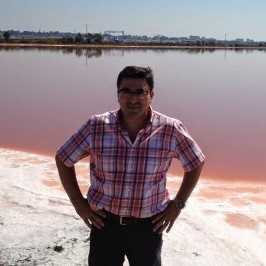Pollution in Estuaries and Coastal Marine Waters
A special issue of Water (ISSN 2073-4441). This special issue belongs to the section "Water Quality and Contamination".
Deadline for manuscript submissions: closed (31 October 2021) | Viewed by 10959
Special Issue Editor
Special Issue Information
Dear Colleagues,
Estuaries and coastal areas are of great ecological importance given the set of high-value ecosystems they encompass. These spaces have been subjected, in the last few decades, to a process of accelerated economic and demographic growth and actions without planning, which have led to the appearance of environmental problems. The installation of industrial sites in coastal areas has had a notable environmental impact due to their high levels of pollution. On the other hand, the tourism boom has led to a process of urbanization of coastal areas with very diverse impacts, such as alterations in the dynamics of the coastline, the transformation of landscapes, and the discharge of untreated or insufficiently treated urban wastewater.
In recent decades, pollution of estuaries and coastal areas has been a major environmental problem that affects not only waters but also aquatic sediments and living organisms.
I invite you to contribute to this Special Issue with an original research or review article related to the pollution of estuaries and coastal areas.
Prof. Dr. José Morillo
Guest Editor
Manuscript Submission Information
Manuscripts should be submitted online at www.mdpi.com by registering and logging in to this website. Once you are registered, click here to go to the submission form. Manuscripts can be submitted until the deadline. All submissions that pass pre-check are peer-reviewed. Accepted papers will be published continuously in the journal (as soon as accepted) and will be listed together on the special issue website. Research articles, review articles as well as short communications are invited. For planned papers, a title and short abstract (about 100 words) can be sent to the Editorial Office for announcement on this website.
Submitted manuscripts should not have been published previously, nor be under consideration for publication elsewhere (except conference proceedings papers). All manuscripts are thoroughly refereed through a single-blind peer-review process. A guide for authors and other relevant information for submission of manuscripts is available on the Instructions for Authors page. Water is an international peer-reviewed open access semimonthly journal published by MDPI.
Please visit the Instructions for Authors page before submitting a manuscript. The Article Processing Charge (APC) for publication in this open access journal is 2600 CHF (Swiss Francs). Submitted papers should be well formatted and use good English. Authors may use MDPI's English editing service prior to publication or during author revisions.
Keywords
- Pollution in estuary waters
- Pollution in coastal marine waters
- Organic pollution
- Metal pollution
- Biomonitoring
- Sediment toxicity
- Macrobenthic community
- Integrated sediment quality index
- Anthropogenic contamination.





